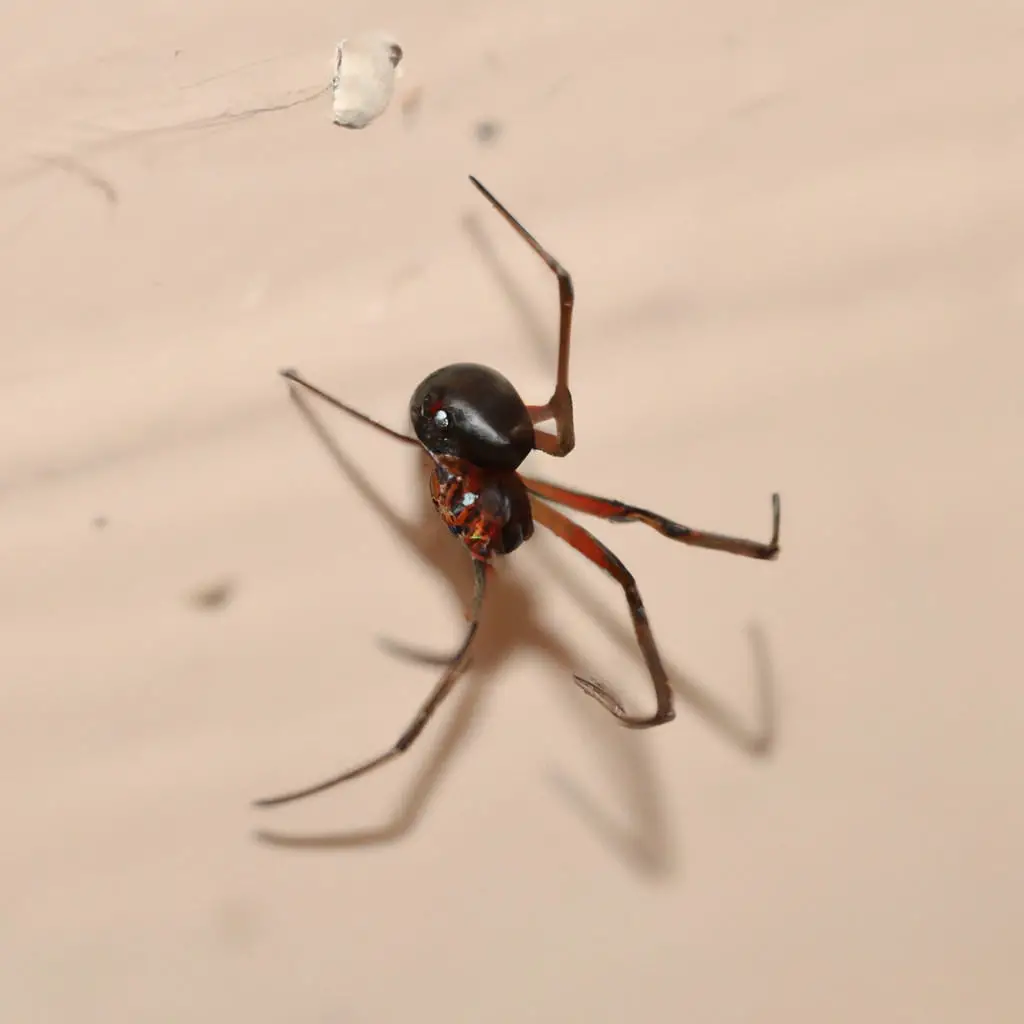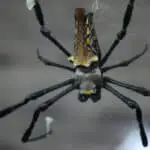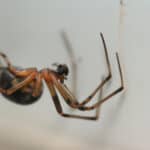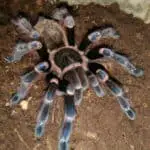Are you tired of seeing brown widow spiders around your home? These venomous arachnids can be a nuisance and even pose a danger to you and your family. Luckily, there are several methods you can use to get rid of brown widow spiders and prevent them from coming back.
First, it’s important to know how to identify brown widow spiders. They are similar in appearance to black widow spiders, but have brown or gray markings instead of black. They also have a distinctive hourglass shape on their abdomen. Knowing what they look like can help you spot them and take action to eliminate them.
In this article, I will cover various methods for eliminating brown widow spiders, including prevention techniques and treatment options for bites. By following these tips, you can protect your home and family from these unwanted pests.
Key Takeaways
- Learn how to identify brown widow spiders to spot them around your home.
- Use prevention techniques such as keeping your home clean and vacuumed regularly.
- If you are bitten, seek medical attention and use anti-itch creams to alleviate symptoms.

Identifying Brown Widow Spiders
As the name suggests, brown widow spiders are brown in color and are about an inch long. They have a shiny abdomen with a mottled or spotted pattern. If you observe closely, you will see an hourglass shape on the underside of their abdomen, which is usually orange or red in color. However, the hourglass shape on a brown widow spider is usually less distinct than that of a black widow spider.
Brown widow spiders have eight legs, which are usually tan or brown in color. They also have white, yellow, or red markings on their legs. These spiders are often confused with black widow spiders due to their similar appearance. However, brown widow spiders have a tan or light brown coloration, while black widow spiders are black in color.
It is important to note that while brown widow spiders are venomous, they are not as dangerous as black widow spiders. Brown widow spider bites are usually less severe and rarely life-threatening. However, it is still important to identify and avoid these spiders to prevent any potential harm.
In summary, brown widow spiders can be identified by their shiny, mottled abdomen, tan or brown legs with white, yellow, or red markings, and a less distinct hourglass shape on the underside of their abdomen.
Geographical Distribution
Brown widow spiders are found in warm and dry areas, primarily in the southern United States, including California, Florida, and Texas. In recent years, they have also been found in western states, including southern California. These spiders are not aggressive, but they may bite if they feel threatened or cornered.
The brown widow spider is native to sub-Saharan Africa and has spread to the southern United States and parts of Central America. It is one of the most commonly found spiders in California and has been found throughout the southwestern United States.
While brown widow spiders are not commonly found in Japan, there have been reports of sightings in the country. It is important to take preventative measures to keep brown widow spiders from infesting your home, regardless of your location.
To prevent brown widow spider infestations, it is important to clear away any clutter, fill in any holes and cracks, replace torn window screens, trim any trees or shrubs close to the home, and regularly vacuum. Additionally, a pesticide or insecticide can be sprayed around the perimeter of the home. Taking these preventative steps can help keep brown widow spiders from infesting your home.
Overall, it is important to be aware of the geographical distribution of brown widow spiders and take preventative measures to keep them from infesting your home.
The Danger of Brown Widow Spiders
As someone who has dealt with brown widow spiders, I can tell you firsthand that they can be quite dangerous. While they are not as venomous as their black widow cousins, they can still pose a threat to humans and pets.
Brown widow spiders have a neurotoxic venom that can cause symptoms such as muscle pain, cramps, and spasms. In rare cases, the venom can cause more serious symptoms such as seizures, paralysis, and even death. It’s important to seek medical attention if you suspect you have been bitten by a brown widow spider.
Unlike black widows, brown widow spiders are not aggressive and will typically only bite if they feel threatened or provoked. However, it’s still important to exercise caution when dealing with these spiders, especially if you have children or pets.
It’s also worth noting that brown widow spiders are becoming more common in certain parts of the United States, so it’s important to take steps to prevent infestations in and around your home. This can include keeping your home clean and free of clutter, sealing cracks and crevices, and using natural repellents such as peppermint oil.
Overall, while brown widow spiders may not be as dangerous as their black widow cousins, they should still be taken seriously. By taking steps to prevent infestations and exercising caution when dealing with these spiders, you can help keep yourself and your loved ones safe.
Symptoms of a Brown Widow Spider Bite
If you’ve been bitten by a brown widow spider, you may experience symptoms that range from mild to severe. It’s important to know what to look for and seek medical attention if necessary.
The symptoms of a brown widow spider bite can include pain, swelling, and discomfort at the site of the bite. You may also experience nausea, vomiting, and fever. In some cases, an allergic reaction may occur, which can cause more severe symptoms such as difficulty breathing, hives, and swelling of the face and throat.
It’s important to note that not everyone who is bitten by a brown widow spider will experience these symptoms. Some people may not even realize they’ve been bitten at all. However, if you do experience any of these symptoms after being bitten by a brown widow spider, it’s important to seek medical attention right away.
In some cases, a brown widow spider bite may lead to a condition known as latrodectism, which is caused by the venom of the spider. This condition can cause muscle pain, cramps, and spasms, as well as difficulty breathing and swallowing.
If you suspect that you’ve been bitten by a brown widow spider, it’s important to keep an eye on your symptoms and seek medical attention if they worsen or if you experience any signs of an allergic reaction. With prompt treatment, most people make a full recovery from a brown widow spider bite.
Treatment for Brown Widow Spider Bites
If you have been bitten by a brown widow spider, it is important to seek treatment as soon as possible. Here are some steps you can take to treat a brown widow spider bite:
-
Wash the bite area with soap and water. This will help prevent infection.
-
Apply an ice pack to the bite area for 10-15 minutes at a time, several times a day. This will help reduce swelling and pain.
-
Take an over-the-counter pain reliever, such as acetaminophen or ibuprofen, to help relieve pain and reduce swelling.
-
If the bite is very painful or if you experience other symptoms such as muscle cramps or difficulty breathing, seek medical attention immediately. Brown widow spider bites can be very painful and in some cases, can be life-threatening.
-
If you live in an area where brown widow spiders are common, take steps to prevent bites. Wear protective clothing when working outside, and keep your home and yard free of clutter and debris where spiders can hide.
-
If you are bitten by a brown widow spider and experience severe symptoms, such as muscle cramps or difficulty breathing, you may need antivenom treatment. This treatment is only available from a doctor or emergency medical provider.
Remember, brown widow spider bites can be painful and in some cases, can be life-threatening. If you are bitten, seek medical attention immediately.
Preventing Brown Widow Spider Infestations
As the saying goes, prevention is better than cure. This applies to getting rid of brown widow spiders as well. Here are some preventive measures that you can take to avoid brown widow spider infestations:
-
Keep your home clean and clutter-free. Clutter provides hiding spots for brown widow spiders and other pests. Regularly clean and declutter your home to make it less appealing to these spiders.
-
Inspect your home for egg sacs. Brown widow spiders lay their egg sacs in protected areas such as under furniture, in closets, garages, basements, and in other hidden areas. Regularly inspect your home for these egg sacs and remove them promptly.
-
Seal entry points. Brown widow spiders can enter your home through cracks, crevices, holes, and other entry points. Seal these entry points to prevent spiders from entering your home.
-
Pay attention to your home’s foundation. Brown widow spiders can enter your home through gaps in your foundation. Inspect your foundation regularly and seal any gaps that you find.
By following these preventive measures, you can significantly reduce the chances of brown widow spider infestations in your home.
Methods to Eliminate Brown Widow Spiders
As someone who has dealt with brown widow spiders before, I understand the urgency to get rid of them. Here are some effective methods to eliminate brown widow spiders:
Vacuuming
One of the easiest and most effective ways to get rid of brown widow spiders is to vacuum them up. Use a vacuum cleaner with a hose attachment to suck up any spiders and their webs. Be sure to dispose of the vacuum bag or empty the canister immediately after use to prevent the spiders from crawling back out.
Insecticides and Pesticides
Insecticides and pesticides can be used to eliminate brown widow spiders. However, it’s important to use them safely and according to the instructions on the label. Apply the product in areas where the spiders are known to hide, such as dark corners, under furniture, and in cracks and crevices.
Sticky Traps
Sticky traps are another effective method to eliminate brown widow spiders. Place the traps in areas where the spiders are known to hide, such as behind furniture, in closets, and in the garage. The spiders will get stuck to the trap and won’t be able to escape.
Essential Oils
Essential oils such as peppermint oil and garlic oil can also be used to repel brown widow spiders. Mix a few drops of the oil with water in a spray bottle and spray it in areas where the spiders are known to hide. The strong scent of the oil will keep the spiders away.
Pest Control
If you have a severe brown widow spider infestation, it’s best to call in a professional pest control service. They have the experience and equipment to eliminate the spiders safely and effectively. Be sure to choose a reputable company with good reviews.
By using these methods, you can eliminate brown widow spiders and prevent them from coming back.
Protective Measures Against Brown Widow Spiders
When dealing with brown widow spiders, it is important to take protective measures to avoid getting bitten. Here are some tips to help you stay safe:
- Wear gloves and protective clothing when working in areas where brown widow spiders are commonly found. This will help prevent accidental bites.
- Be cautious when moving items that have been sitting outside for a long period of time. Brown widow spiders like to hide in dark, secluded areas such as boxes, woodpiles, and sheds.
- Wear shoes when walking around outside, especially in areas where brown widow spiders may be present. This will help protect your feet from accidental bites.
- Use caution when reaching into dark corners or crevices. Brown widow spiders may be hiding in these areas and can quickly bite if they feel threatened.
By taking these simple precautions, you can greatly reduce your risk of being bitten by a brown widow spider. Remember to always be aware of your surroundings and take the necessary steps to stay safe.
Other Spiders to Be Aware Of
While brown widow spiders may be a concern, it’s important to also be aware of other spider species that could potentially be dangerous. Here are a few spiders to keep an eye out for:
Brown Recluse
The brown recluse spider is another venomous spider that is commonly found in the United States. These spiders are typically light brown in color and have a violin-shaped marking on their back. Their venom can cause a range of symptoms, from mild irritation to severe necrosis (tissue death). If you suspect you have been bitten by a brown recluse spider, seek medical attention immediately.
Black Widows
Black widow spiders are perhaps the most well-known venomous spider in the United States. These spiders are typically black with a distinctive red hourglass marking on their abdomen. Their venom can cause muscle pain, cramps, and spasms, and in severe cases, can be fatal. If you suspect you have been bitten by a black widow spider, seek medical attention immediately.
Other Spiders
While brown recluse and black widow spiders are the most well-known venomous spiders in the United States, there are many other species of spiders that can be found in and around homes. While most spiders are harmless, it’s important to be cautious and avoid handling spiders whenever possible. If you are concerned about spiders in your home, consider contacting a pest control professional for assistance.
Frequently Asked Questions
How can I naturally get rid of brown widow spiders in my house?
There are several natural ways to get rid of brown widow spiders in your house. One of the most effective ways is to keep your house clean and free of clutter. Brown widow spiders love to hide in clutter, so by eliminating it, you can reduce the chances of them infesting your home. You can also use essential oils like peppermint, eucalyptus, and lavender as natural repellents.
Should I kill brown widow spiders or remove them?
It’s up to personal preference whether you want to kill or remove brown widow spiders. If you’re not comfortable with spiders, you can try to remove them by using a jar or cup to trap them and then release them outside. If you want to kill them, you can use a pesticide or insecticide.
How do I destroy brown widow spider eggs?
Brown widow spider eggs are usually found in sacs, which can be destroyed by vacuuming them up. If you don’t have a vacuum, you can use a broom to sweep them away. Be sure to dispose of the sacs in a sealed plastic bag and throw them away in the trash.
Are brown widow spiders dangerous to humans?
Brown widow spiders are venomous, but their bite is not usually life-threatening to humans. However, if you are bitten by a brown widow spider, you may experience symptoms such as pain, swelling, and nausea. If you experience severe symptoms, seek medical attention immediately.
What keeps brown widows away from my home?
To keep brown widows away from your home, you can take preventative measures such as sealing any cracks or holes in your home’s exterior, trimming trees and shrubs away from your home, and keeping your home clean and clutter-free. You can also use pesticides or insecticides around the perimeter of your home to deter brown widow spiders.
What can I use to kill widow spiders?
There are several pesticides and insecticides that can be used to kill brown widow spiders. Be sure to read the label and follow the instructions carefully. You can also use natural remedies such as diatomaceous earth or vinegar to kill brown widow spiders.








